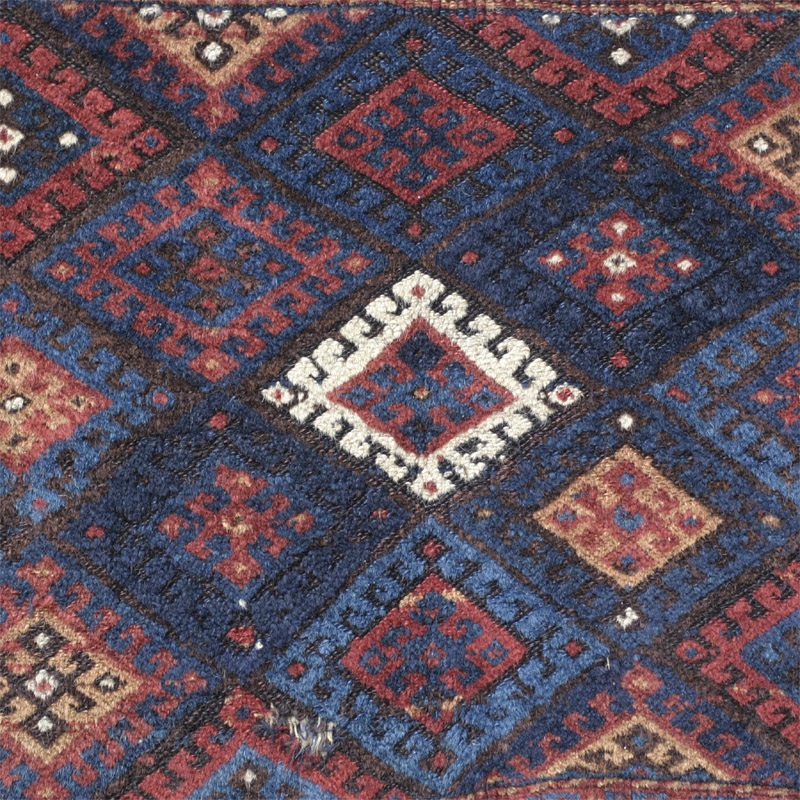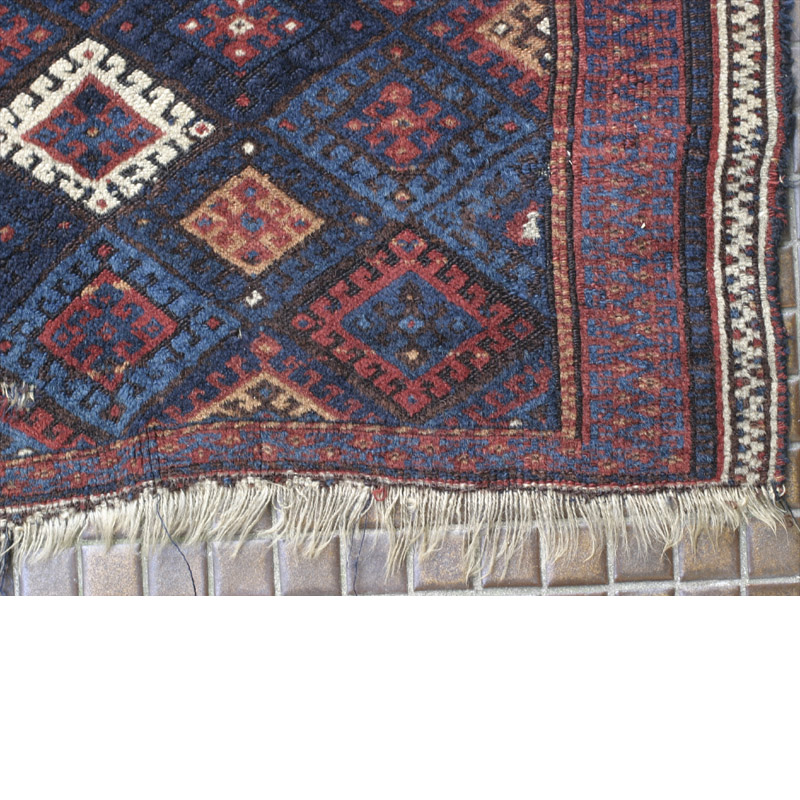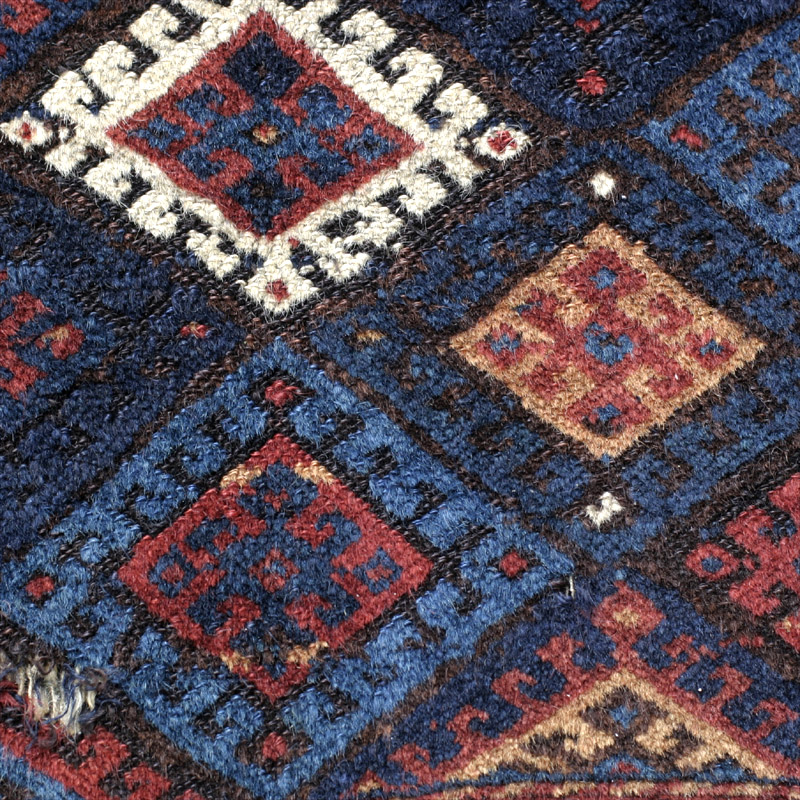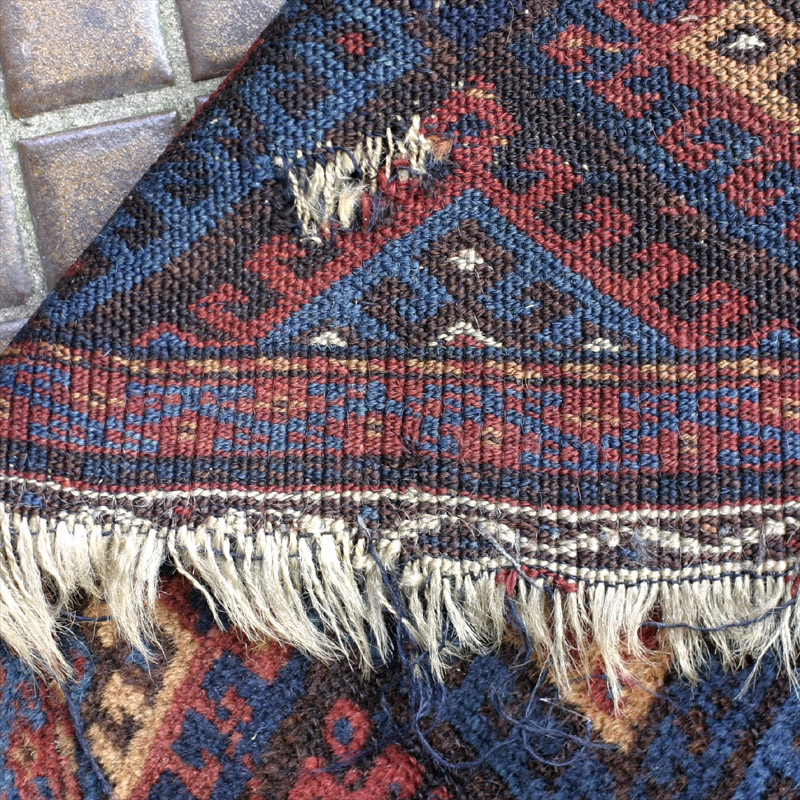One of the many Jaff Kurd bag faces around, earlier than many. It has an unusual ratio of width to hight, quite squashed in comparison to the bags we usually see. This is probably the face of a half khorjin (saddle bag); in the full khojin, the weave would have extended downwards to reverse into a flatwoven back going right across to the other side of the animal where you would have a matching bag for good balance. Of this, as of the closing system at the upper end, nothing remains. It would have been quite a wide and not very deep khorjin. The design of diamonds with hooked sides is well known and found frequently in weaves of the Kurdish Jaff tribe and also those of other tribes, not only in bags. The design which is 'diagonals-only' is probably derived from flat weaves where diagonal boundaries between adjacent colours lead to higher structural strength than vertical boundaries.
Around the central position of a white diamond, the distribution of colours follows a more random approach, following a rule that adjacent diamonds should not have the same distribution of colours, while it is possible to have adjacent diamonds with inverted colours (red on blue instead of blue on red).
The bag face measures 32.5in. x 17.7in. (83 x 45 cm). Thin off-white wool warps, two shoots of very thin dark blue wool wefts, no warp depression, ver ysmooth and even back. The knots are symmetrical 6.h, 16.v = ca. 96 kpsi. Offset knotting in the field (i.e., rows of knotting shift laterally by one warp in each new row, to get a steeper diagonal of the diamonds). In spite of offset knotting, the fact that vertical density is more than 2.5 times higher than horizontal density leads to the squashed diamonds—I have not seen them this squashed before in a piece done in offset knotting. The wool is long staple, soft and shiny, the handle is soft and very flexible, cloth-like.
Except for corrosion in the dark brown areas, the pile is quite full, slightly lower in the centre. There is a hole in the central bottom area, with all but one warps remaining; should be relatively easy to repair, but does not detract greatly from the impact as it is. The lower outer border is partly missing, as are one or two rows of knots of the top end. Both top and bottom ends are open and fraying a bit and need to be secured by some stitches. The left selvage also shows some damage (see images).
I have carefully washed this bag face in a mild (PH-neutral) detergent since it was quite dirty, though not very vigorously—for this, it would be better to first secure the ends.
The palette is limited to madder red, two shades of indigo, two shades of brown, a nice honey yellow, and off-white. The dyes are very good and saturated and clearly all natural; the use on a lot of dark blue and two shades of dark brown (of which the darker one is corroded, i.e. here pile is down to the foundation) gives an overall sombre appearance to the piece which makes the white and yellow diamonds stand out in contrast.




